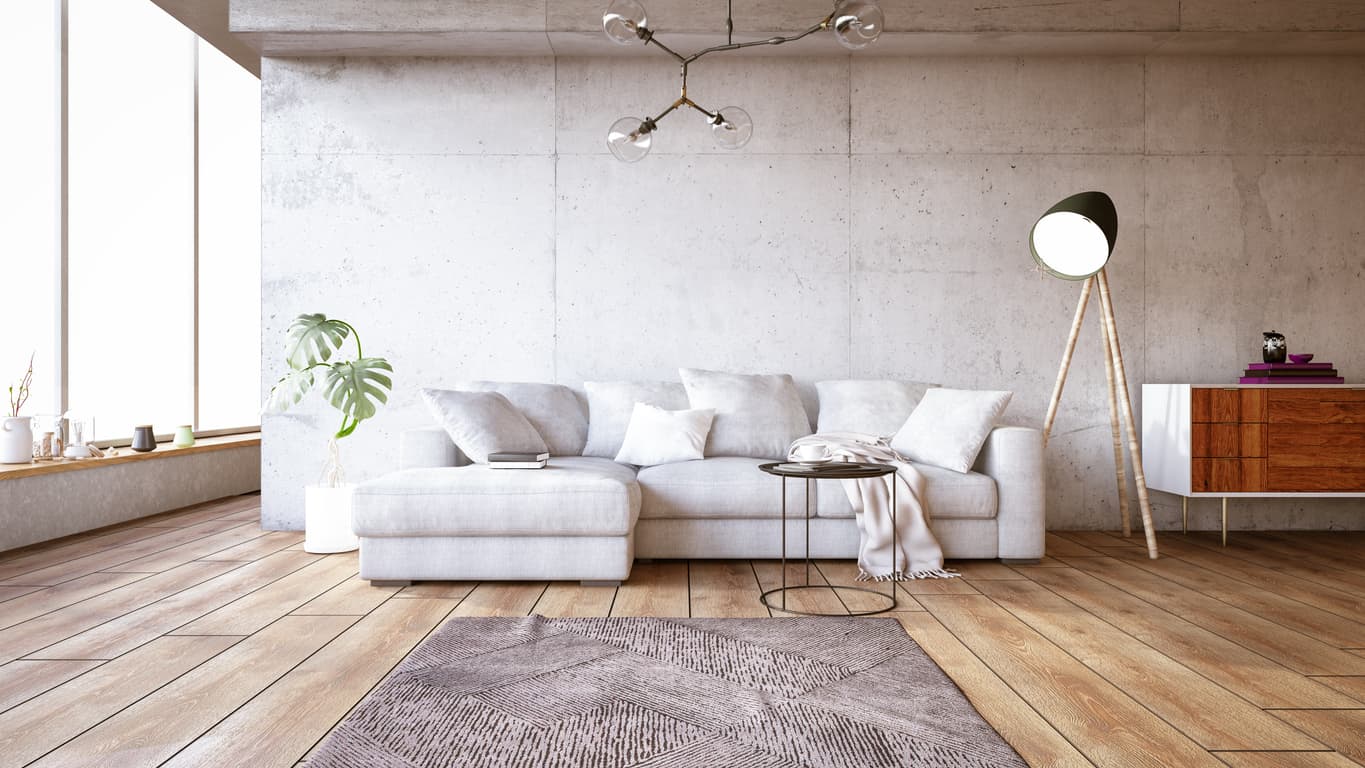If you’re looking to refresh your home by giving your flooring a facelift, you may be considering covering your current flooring with an alternative, such as hardwood flooring or another tile.
If so, you’ll likely need to opt for a floating floor installation. This type of flooring installation, in which the flooring material “floats” over the subfloor, has become increasingly popular. This method of installation can be used on a variety of materials, including laminate, engineered hardwood and luxury vinyl flooring.
What is Floating Flooring?
This type of flooring installation involves individual planks (or in some cases tiles) interlocking edge-to-edge to form a single, mat-like surface that rests upon the underlayment. This is vastly different, and more a more flexible option, compared to the traditional nail – or glue-down method of floor installation. Given its relative ease and simplicity, this style of floor installation is quicker and cost-effective. It also makes it easier to replace outdated flooring or to give your space a refresh. On the flip side, this kind of flooring installation is sometimes regarded as lowering a home’s real estate value, as you may experience hollow or loud underfoot noise. It should also be noted that flooring installed in this method cannot be refinished.
Floating Floor Examples
Within the floating floor installation method, there are three types of flooring that are most commonly installed.
Laminate flooring
Perhaps the most popular type of flooring for this method, laminate flooring is almost never glued down to its subfloor. As such, the floating method allows the flooring to respond to changes in a room’s relative humidity by expanding and contracting without buckling.
Luxury vinyl flooring (LVF)
Also known as vinyl plank flooring, LVF is an easy and convenient flooring option as the boards simply snap together, in much the same way as laminate planks.
Engineered hardwood
While it’s common for engineered hardwood flooring to be stapled or nailed down to its plywood subflooring, it’s becoming equally popular to install this flooring using the floating method wherein the planks simply snap together. Similar to laminate flooring, engineered hardwood includes a decorative surface glued onto a plywood or MDF core.
Floating Floor Maintenance & Repair
Like any kind of flooring, the way in which floating floor material is cleaned and maintained is largely governed by the type of material. Cleaning laminate or luxury vinyl flooring is often a matter of using a damp mop or cloth to clean any dirt or spills, while engineered hardwood should not be exposed to water. Floors installed using this method are also generally easier to repair, as planks can be disassembled and replaced.
Floating Flooring Design
While there exists the misconception that floating floors can lower real estate value of a home, this is generally less true of luxury vinyl flooring, which is considered superior to glue-down sheet vinyl flooring or vinyl tiles. Floating floors afford more flexibility, as both LVF and even some laminate varieties are available in many styles, colours and designs. In fact, many styles can be found that mimic the appearance of wood, stone, and even metals.
Floating Floor Installation
All three of the most common floating floor materials share a nearly identical installation method. First, the installer prepares the subfloor to ensure the surface is as flat and smooth as possible. Next, an underlayment is applied to the subfloor, which is often a thin layer of dense, resilient foam that is rolled out. Finally, the flooring planks are assembled, beginning along one wall and proceeding across the room to the opposite wall.
FAQs About Floating Floors & Layering Flooring
Below are some frequently asked questions regarding floating floors and layering flooring.
Can you put new tile over old tile?
Tiling over tile is usually a much easier and cost-effective solution than pulling up your original tiles and retiling your floor or wall. Installing tile over tile, however, does have some downsides.
You’ll have to be mindful of floor height, which can become too high and possibly block doors or cupboards that are in line with the old flooring prior to the re-tiling job.
Can you put new flooring over ceramic tile?
Ceramic tile is a tough flooring surface that is both difficult to remove and easy to damage in the process. It is set into a bed of thin-set that hardens like concrete, and the tile itself shatters like glass during removal. As such, many homeowners decide to go right over the top of it with new flooring, which can include: new ceramic tile, wood flooring (which requires a plywood subfloor), laminate flooring, or carpet.
Can you install hardwood flooring over ceramic tile?
Hardwood flooring can be installed over ceramic tile with a few exceptions. Whenever you install hardwood flooring over any type of subfloor, you must ensure that it is completely level. If your ceramic tile has grout lines that give it texture, you will need to fill those in to make your flooring completely level. If not, moisture could pool underneath the cracks causing serious damage to your new floors.
With a few exceptions in mind, floating flooring can be a great option if you’re looking to give your home a refresh without opting for a full flooring overhaul. As with any kind of renovation, it’s always best to consult trusted professionals for their expert opinion.

